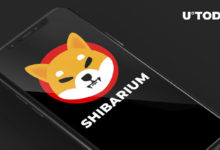Cosmos Developer To Offer a Stablecoin Built for the Interchain

Two weeks after Cosmoverse, developers from the Cosmos interchain community are back to building. For Dean Tribble, the CEO and founder of Agoric, the focus is on a new Cosmos stablecoin and the dapps that will use it.
Agoric, an open-source development company working on the Cosmos software development kit (SDK), is developing its native stablecoin (IST) for the interchain network and assisting the development of five decentralized applications that will launch alongside the Agoric mainnet.
Tribble founded Agoric in 2018 with the general mission of enabling large-scale decentralized cooperation, but he had been working in distributed systems and smart contract technology since 1989.
He and his team built Agoric, a proof-of-stake chain, to enable application developers to be able to write smart contracts in a hardened version of JavaScript.
“Not only can JavaScript actually work in a smart contract environment with deterministic execution, but it’s a framework that build upon the work of others. And it’s that building upon the work of others that gets you exponential growth of an ecosystem — and that is our target,” Tribble said in an interview with Blockworks.
Tribble predicts that JavaScript will allow crypto’s smart contract world to move into the mainstream. It’s a simple numbers game: There are 6,000 developers who can write in Solidity, Ethereum’s native smart contract language, he told Blockworks, compared to 17 million Javascript programmers worldwide.
Why a stablecoin?
To ensure that Agoric has a thriving economy to launch its product, Tribble said, it will be important to launch the inter protocol token (IST), an overcollateralized, cryptocurrency-backed but decentralized stable token designed to maintain parity with the US dollar.
“We realized that the stable token we were building for Agoric had all the properties you need for the Interchain,” Tribble said. “IST lays the groundwork for a cross-chain economy so that businesses can have their price comparable with everybody else’s price and are paying for things at the same unit of price — things that we take for granted in the modern economy.”
Tribble says that the first release of IST will integrate high-quality, price-stable tokens including USDC, USDT and DAI that are fully backed and collateralized and made available in the Cosmos ecosystem.
By doing so, Tribble says that IST will recollect the fungibility across different sources of liquidity into a single point of reference and as time goes on, new risk-managed tokens will be incorporated into IST.
The Cosmos ecosystem recently revealed that USDC would be available natively to its interchain, but Zaki Manian, co-founder of Iqlusion, believes that this will not change the importance of having a native stablecoin on the Cosmos network.
“IST is a key piece of the emerging stablecoin ecosystem. Being able to take bridged assets and native USDC and turn them into a common unit of account is an important step forward in Cosmos DeFi,” Manian said.
IST will also come at a time when the Cosmos ecosystem revamps its native token ATOM. A move, Tribble says and will be synergistic with the launch of IST.
“Atom 2.0 will enable more cross-chain DeFi — which makes a cross-chain stable token more valuable and more important,” Tribble said. “There’s two sides of it: the capital, funding side and the ability to execute commerce side.”
As the Cosmos ecosystem continues to grow, Tribble acknowledges the most important factor right now will be to foster a robust, healthy governance and integrate IST in as many parts of the ecosystem as possible.
“We want to roll out very conservatively and carefully,” he said. “We’re sort of a risk managed portfolio of all the mechanisms for producing a stable token — so IST will have a life that is about the interchain and not about Agoric.”






 Bitcoin
Bitcoin  Ethereum
Ethereum  Tether
Tether  USDC
USDC  TRON
TRON  Dogecoin
Dogecoin  Cardano
Cardano  Bitcoin Cash
Bitcoin Cash  Chainlink
Chainlink  LEO Token
LEO Token  Stellar
Stellar  Monero
Monero  Zcash
Zcash  Litecoin
Litecoin  Hedera
Hedera  Dai
Dai  Cronos
Cronos  OKB
OKB  Tether Gold
Tether Gold  Ethereum Classic
Ethereum Classic  KuCoin
KuCoin  Gate
Gate  Algorand
Algorand  Cosmos Hub
Cosmos Hub  VeChain
VeChain  Dash
Dash  Tezos
Tezos  Stacks
Stacks  TrueUSD
TrueUSD  IOTA
IOTA  Basic Attention
Basic Attention  Theta Network
Theta Network  Decred
Decred  NEO
NEO  Synthetix
Synthetix  Qtum
Qtum  Ravencoin
Ravencoin  0x Protocol
0x Protocol  DigiByte
DigiByte  Zilliqa
Zilliqa  Nano
Nano  Numeraire
Numeraire  Siacoin
Siacoin  Waves
Waves  Ontology
Ontology  Enjin Coin
Enjin Coin  Status
Status  BUSD
BUSD  Pax Dollar
Pax Dollar  Hive
Hive  Lisk
Lisk  Steem
Steem  Huobi
Huobi  NEM
NEM  OMG Network
OMG Network  Augur
Augur  Bitcoin Gold
Bitcoin Gold  Ren
Ren  Bitcoin Diamond
Bitcoin Diamond